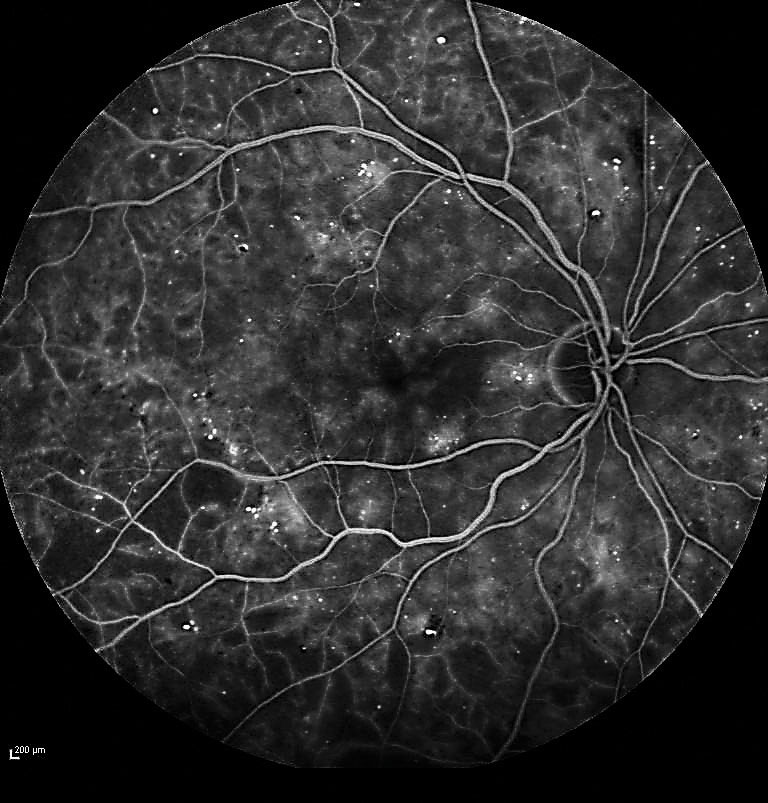 |
| This screening technique for DR patients helped determine when follow-up was needed. Photo: Jay M. Haynie, OD. Click image to enlarge. |
Screening with non-mydriatic cameras is effective in detecting diabetic retinopathy (DR), and many countries have developed extensive screening programs. However, annual screening has proven to be very difficult to conduct. Many believe it is important to develop diagnostic systems that can support personalized screening regimes based on an individual’s various clinical risk factors. Spanish researchers recently developed a prediction algorithm that can grade a patient’s risk of developing DR and then recommend suitable screening intervals.
The algorithm uses nine risk factors: age, sex, body mass index, duration and treatment of diabetes, arterial hypertension, glycated hemoglobin, urine-albumin ratio and glomerular filtration. Testing yielded an area under the curve (AUC) of 0.826, with a sensitivity of 84%, specificity of 88.5%, positive predictive value (PPV) of 63.8% and negative predictive value (NPV) of 95.8% for patients with diabetes.
The researchers decided to validate the algorithm on a real population of 602 patients with type two diabetes for one year. The mean age of the cohort was 67.03, and 53.2% of patients were male. Diabetes duration was 10.12 years. The algorithm noted DR in 35.8% of patients, and the AUC for predicting the presence of DR achieved a value of 0.988. Compared with the testing values, sensitivity scores in the real population increased to 98.2%, specificity increased to 99.2%, PPV to 98.7% and NPV to 98.9%.
The results allowed the researchers to personalize screening. Of the 380 patients who did not have DR and had to be screened, 211 (55.5%) were given a follow-up visit one year later and 169 (44.5%) were scheduled for more than one year later. However, the team noted that their “system had been developed with patients of exclusively Caucasian origin, so results should not necessarily be extrapolated to other populations.”
Nevertheless, the study concluded that the clinical diagnosis support system for DR was proven to be efficient for a random sample of patients with diabetes.
Romero-Aroca, Verges R, Maarof R, et al. Real-world outcomes of a clinical decision support system for diabetic retinopathy of Spain. BMC Open Ophthalmol. March 28, 2022. [Epub ahead of print]. |


